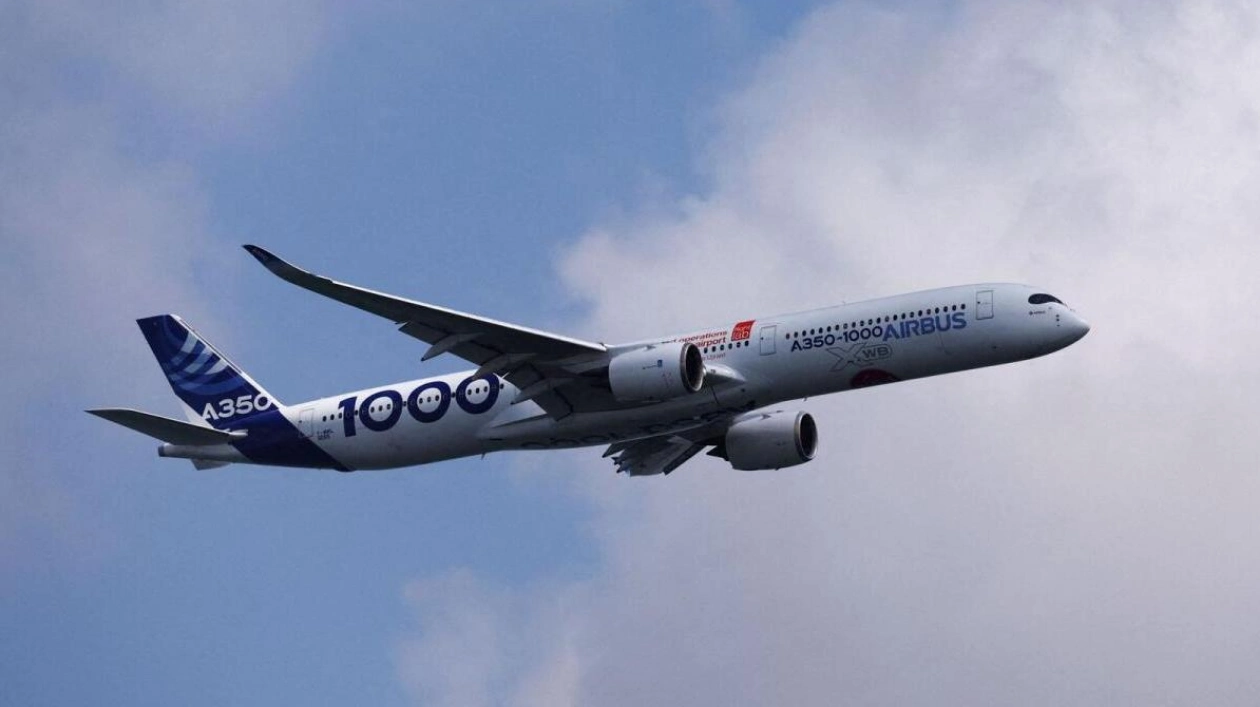Europe's air safety regulator announced on Thursday that it will mandate inspections of at least a portion of the Airbus A350 long-haul fleet following an engine part failure during a Cathay Pacific A350-1000 flight. The European Union Aviation Safety Agency (EASA) stated that it is taking precautionary measures to prevent similar incidents after consulting with its Chinese counterpart, Hong Kong investigators, Airbus, and engine supplier Rolls-Royce. EASA also confirmed that a fuel system failure had led to a fire, which was promptly addressed by the crew.
"We will require a one-time fleet inspection, which may be applicable only to a portion of the A350 fleet, to identify and remove from service any potentially compromised high-pressure fuel hoses," EASA said in an emailed statement. Details and timeframes for these checks will be specified in an emergency airworthiness directive issued on Thursday. Both Rolls-Royce and Airbus affirmed their close collaboration with authorities to comply with the directive. Rolls-Royce emphasized its focus on minimizing short-term disruptions, adding, "We apologize to those who may be affected."
The A350-1000, the larger variant in the Airbus A350 series, and its Rolls-Royce XWB-97 engines have come under scrutiny since a Zurich-bound flight was compelled to return to Hong Kong due to an engine issue, later identified as a fuel leak. Initial investigations indicate that a flexible pipe supplying a fuel injection nozzle was pierced, and the Hong Kong-led investigation must now ascertain whether this was the cause or a consequence of the incident. The A350-1000 constitutes 15% of the A350 fleet in operation.
While details of the EASA measure were still under discussion, sources familiar with the matter suggested it would likely involve a visual inspection of Trent XWB-97 engines with progressive deadlines—a relatively straightforward maintenance task. The XWB-84 engine, which powers the more commonly used A350-900, is less likely to be included in these checks. The decision to order precautionary inspections of at least part of the fleet follows manufacturers initially opposing checks of the entire A350 population, according to sources.
Given the highly technical nature of modern aircraft and engines, manufacturers typically undertake much of the technical groundwork in preparing regulatory instructions and play a pivotal role in global fleet monitoring. However, regulators retain the authority to override their recommendations and mandate their own inspections, especially amid heightened pressure to act independently following a global tightening of safety oversight in the wake of a Boeing safety crisis. This decision is viewed as the first public test for the recently appointed EASA Executive Director, Florian Guillermet.
Although the fire was quickly contained with no injuries, the incident's handling remains critical for Rolls-Royce and airlines amid public concerns over air safety. Insiders suggest this could lead to a dispute over the technical wording specifying the criteria for replacing any parts. Rolls-Royce is keen to ensure that any repair work is driven by technical factors rather than external pressures on airlines and is likely to remind carriers to adhere to correct procedures and tools after a series of ad hoc inspections, according to sources. Airlines, on their part, have been seeking more clarity from Airbus and the engine maker and have criticized the lack of communication as they address passenger inquiries.
Airbus and Rolls-Royce aimed to address airlines' concerns during their first closed briefings to carriers since Monday's incident. Questions included which planes would be affected and the availability of parts, according to a person briefed on the matter.






